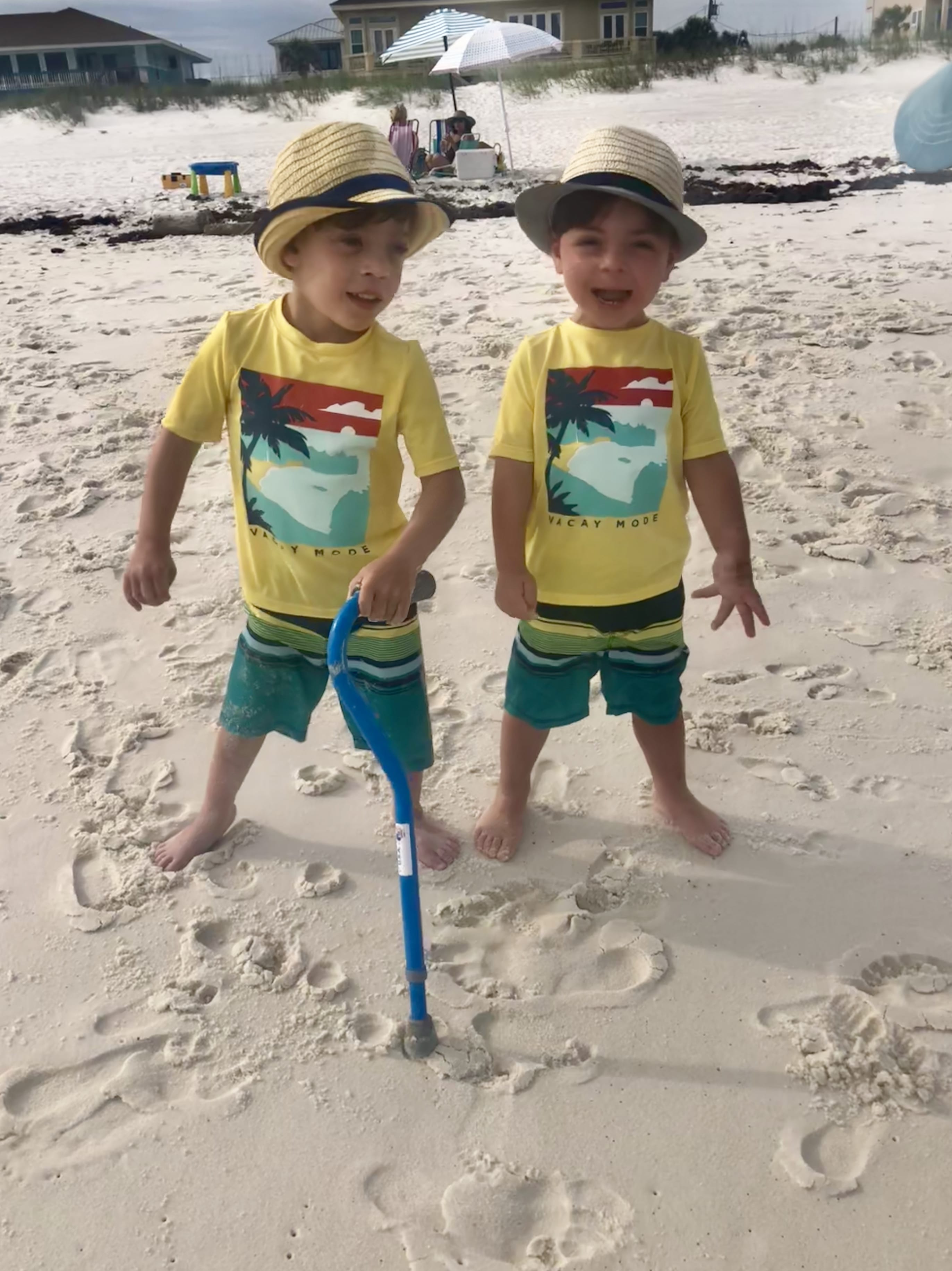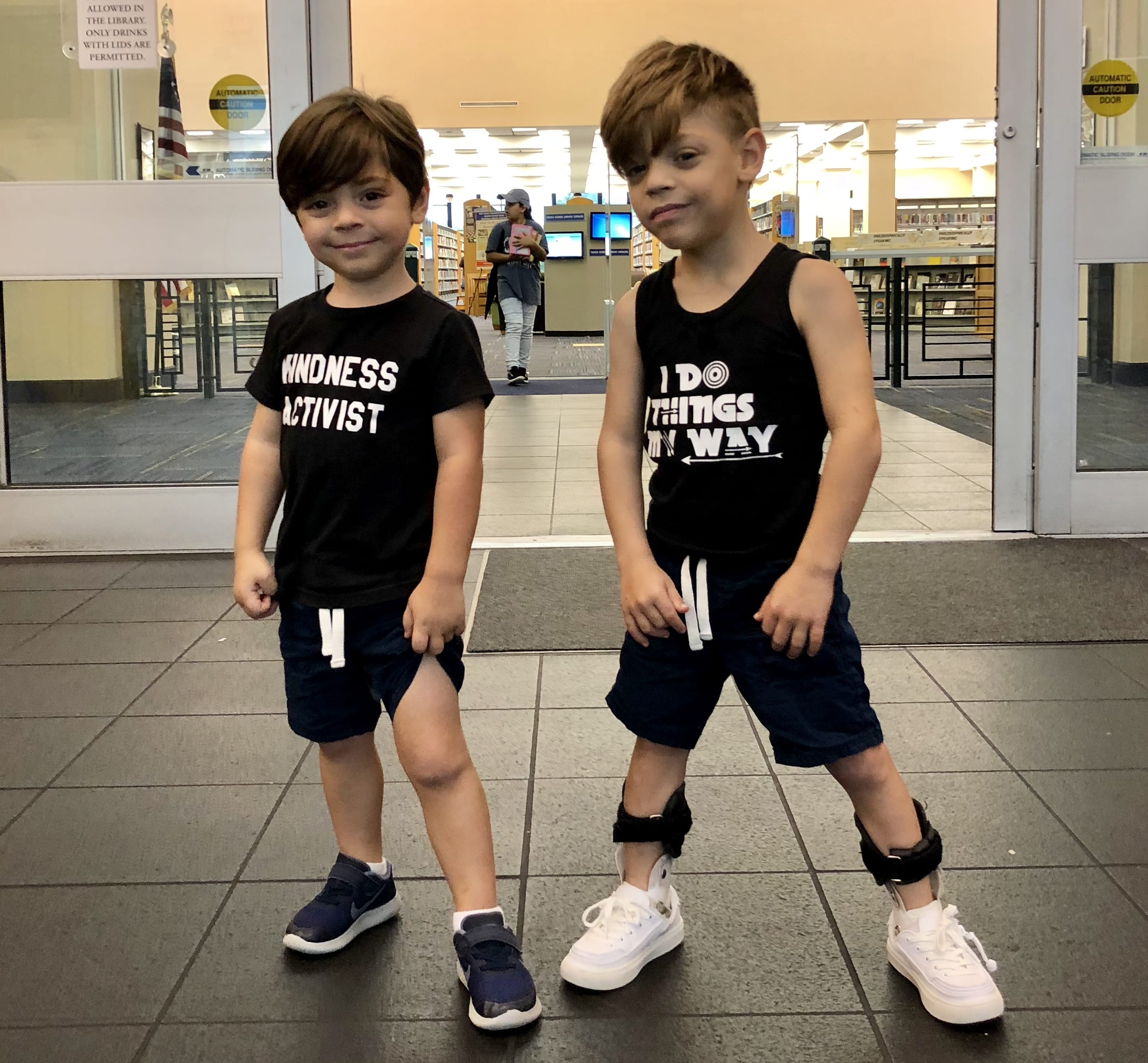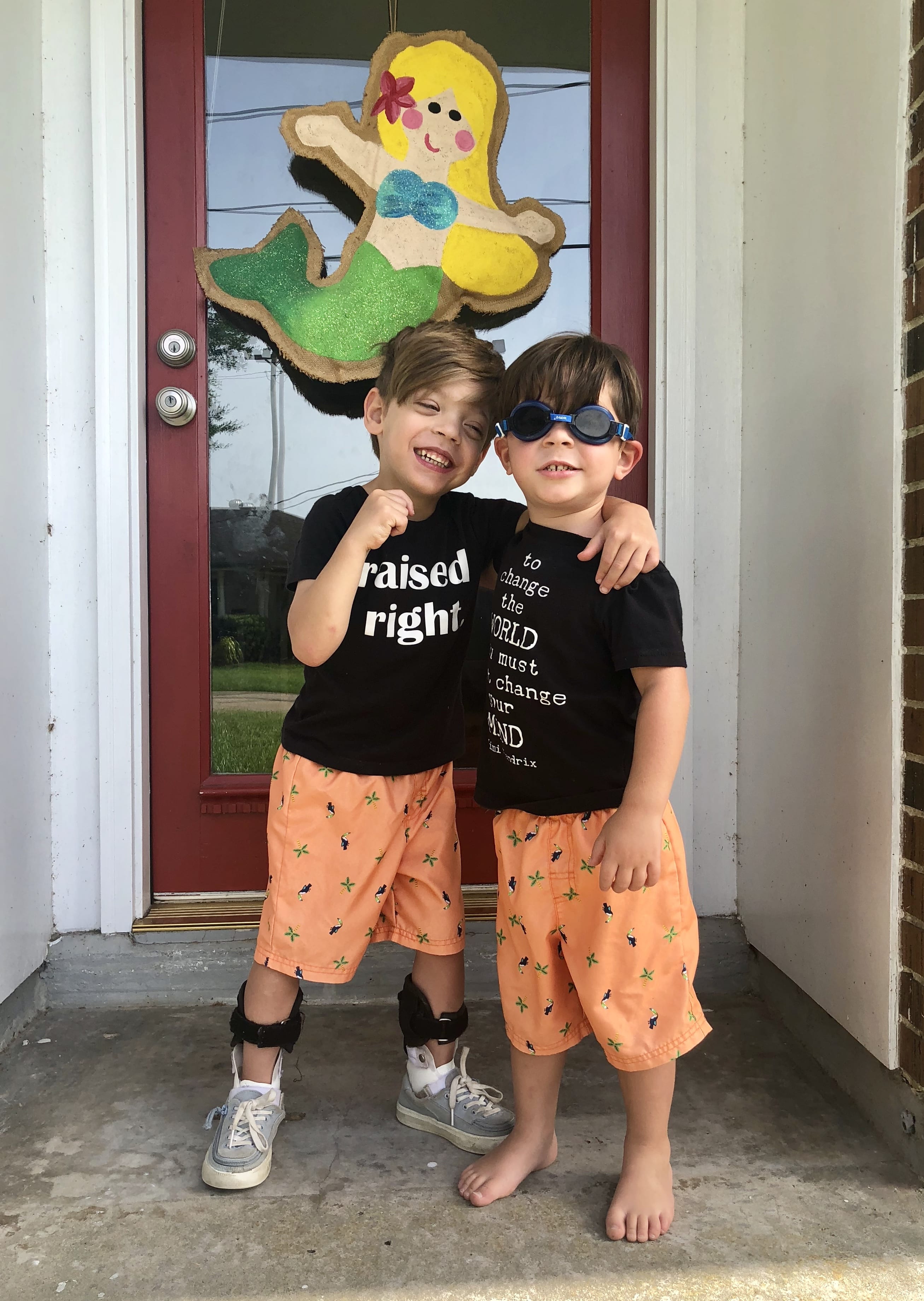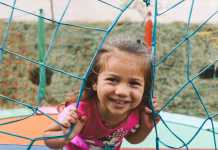I have a 5-year-old who just started school this fall. He loves to learn and is very social. He is generally well adapted to life.
He is also mobility challenged.

I have a child with different needs.
Sometimes he walks independently. Sometimes he walks with his cane. Sometimes we use the stroller for longer distances. He wears orthotics, otherwise known as braces on his legs. He falls often. To be honest, at this point, none of this bothers him. He hops back up when he falls and he carries on.
As he begins his school career, my hope for him is that he feels accepted for all of the wonderful things that he is.
It is every mom’s hope that their child will be included
It is a part of life that sometimes we are not included and we can teach our children how to handle that. As moms, we can and will teach coping skills to deal with the rejection that life brings sometimes. However, we can also make an effort to use opportunities to teach kindness and inclusion. As parents, it is our mindset and attitude that our children are learning from. They are looking to us for guidance.
Here are 8 ways to teach your kids about differences
1. Let Them Ask Questions
Questions are okay. Questions are an opportunity to educate and to dispel myths. Children have a curiosity about other children and their differences and that is okay.
Question: Why doesn’t he walk?
Answer: He does walk. He just walks differently than you. His legs work differently than your legs. Everyone is born differently. Some people walk differently just like some people have blonde hair and others have brown hair. Our bodies and brains are all made differently.
Question: Why does he use that cane / crutch?
Answer: He uses a cane sometimes and wears braces on his legs to help him to walk. The same way that some people wear glasses to help their eyes to see better.
2. Teach them about personal records
We all have personal records or things that we are working to get better at all of the time. Do you know how your sister is working on tap dancing and your brother is working on swimming? Well, some kids are working on walking and talking better. We are all working on different things. What are you working on?
3. Give them concrete information
If you’re unsure, ask a special needs mom. They are usually more than happy to be transparent. Differences can sometimes feel scary to children and even to adults. Kids are resilient and flexible.
They can understand concrete things like:
- He doesn’t like certain noises.
- He likes to wander a bit, so we have to watch him closer.
- She has almond-shaped eyes. We all look differently.
- He has allergies. He can’t eat certain foods. Let’s get him something special.
- She eats through a tube in her tummy.
- He talks differently than you. We all speak differently.

4. Teach them that we are all more alike than different
Some kids learn differently than you do. Some kids speak differently than you do. Some kids look differently than you do. We all have the same heart.
5. Expose them to diversity
Kids who are around my son often do not notice his differences. I suppose they are desensitized to them. They know he walks slower. They know he falls and laughs. They know that sometimes when he is tired, he crawls. They accept him just the way he is. It isn’t a big deal to them, which feels really cool. Cousins and special needs siblings are a great example of love and adaptability for all of us. Take your kids to new places and expose them to other children.

6. Teach Them Random Acts of Kindness
Put these in bingo form and have them color a box every time they do something kind. Here are some examples:
- Ask someone new to play
- Help someone who needs help
- Say something kind to someone
- Share with someone today
7. Teach your kids about accommodations
In the previous school that my son attended, whenever they sat down to eat lunch, the children would run and get a stool for him to put his feet on. They understood that his feet needed to be on the ground in order for him to sit better. This is an example of four-year-olds understanding accommodations. How cool is that?! This was because his wonderful teachers were great examples to all of the children.
More examples of accommodations:
- Teach your kids that some kids do not like candles on their cake
- Some kids do not like to sing happy birthday
- Some children are sensitive to noises

8. Examine your own feelings about differences
What I notice often is that kids ask questions because they are curious. Some adults handle differences with grace. Others get quiet, stare, or convey pity. Please know that this transfers to your children. When you aren’t sure what to do, just come up and say hi. Kindness and connection is always the answer. If we were all exactly alike, the world would certainly be a boring place.
















